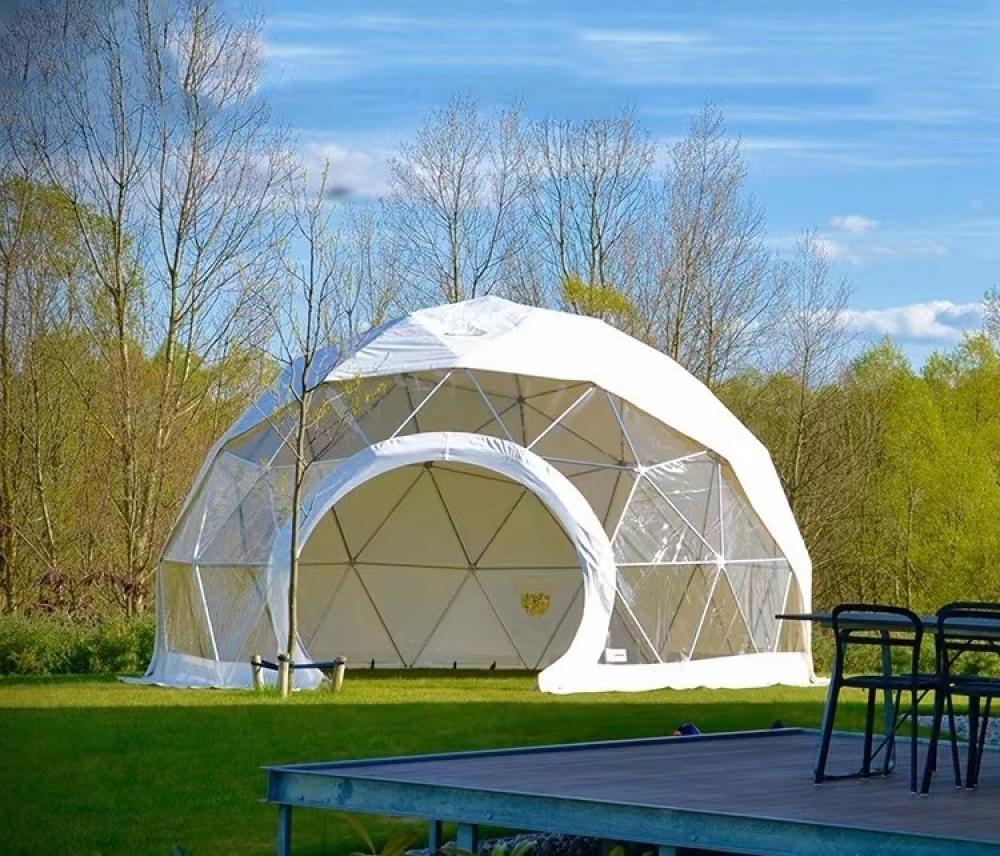The Countless Benefits of Alternative Housing
As the world faces growing challenges in sustainable housing, a wave of innovative ideas has redefined what we call a “home.” From geodesic domes to dome tents and luxurious resort-style glamping tents, housing today reflects a balance between humans and the environment, between sustainability and comfort, between flexibility and safety.
With the worsening climate crisis, rising material costs, and urban overcrowding, thinking outside the box is no longer a luxury — it’s a necessity. Housing is no longer just about walls and corners; it’s a full experience that reconnects us with nature.
Top Trends in Alternative Housing
1. Geodesic and Circular Domes
Designs like the geodesic dome tent and luxury circular domes are increasingly used in high-end projects, including resort-style glamping tents and safari-style tents with Arabic outdoor seating. These structures are hurricane-, wind-, and snow-resistant, consume significantly fewer materials than conventional buildings, and offer excellent insulation and energy savings — ideal for premium desert tents and eco-camping units.
2. DIY Workshops (Self-Building)
This trend has gained popularity globally, especially in projects like building dome tents or geodesic tents using local or eco-friendly materials. It helps reduce costs, enhance hands-on skills, and is commonly seen in weather-resistant travel tents.
3. Superadobe (Reinforced Earth Structures)
This technique involves filling long bags with earth or clay to build strong, dome-like structures. It's ideal for family camping zones or rural settlement projects, providing natural insulation, low cost, and a strong connection to the land.
4. Binishells (Inflated Concrete Domes)
These are formed by inflating air beneath concrete molds to create durable dome structures. They’re used for both permanent and emergency housing and can also serve as event domes or exhibit tents in the Kingdom — practical and cost-effective solutions.
5. Temporary and Emergency Shelters
Examples include fabric tents for families and travel-ready pop-up tents — quick to transport and assemble — making them ideal for emergencies or short-term projects like overnight trips in Taif or Sidin, Jazan.
6. Adaptive Reuse
This approach converts old buildings into modern homes. It can also be seen in repurposing items like a used Saudi tent for sale or a four-person bell tent with side ventilation, offering flexible layouts and tourism appeal — expanding investment potential.
7. Tiny & Micro Homes
These are gaining traction in urban areas and often come in mobile or fixed designs under 40 m² — perfect for glamping experiences like a sunset retreat in a floor-seating tent or a standalone unit in a home garden.
Why Are We Shifting Toward These Trends?
- Energy Efficiency: Designs like circular or dome tents use fewer materials and offer better thermal regulation.
- Construction Flexibility: Some models, like circular dome tents or new tents for sale, can be installed in days.
- Mobility: Easy to disassemble and relocate — ideal for booking desert adventures in Saudi Arabia.
- Weather Resistance: Provide protection from wind, earthquakes, and extreme heat — as seen in luxury geodesic tents.
- Community Support: Tents like those from NEOM TENTS or exhibition tents offer quick, safe shelter during emergencies.
Challenges Facing Alternative Housing
- Regulations: Some countries still don’t recognize non-traditional designs like dome tents or half-circle tents.
- Lack of Awareness: Many people are unaware of the benefits of alternative housing, and some companies lack experience with geodesic structures.
- Infrastructure Setup: Plumbing and electricity often require tailored solutions for flexible layouts like circular tents.

